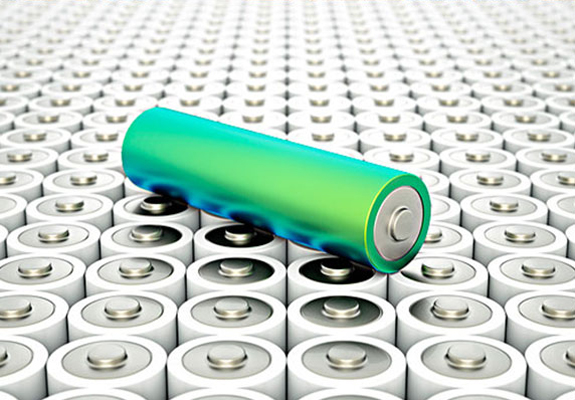Wireless Battery Charger-Introduction, Working, And Best Buy
Aug 21, 2020 Pageview:959
Wireless charging might one date eradiate plus and wires, just like how Wi-Fi and Bluetooth have modernized our personal communication. This post is going to cover all you need to know about wireless battery charging. So, continue reading to find out how does a wireless battery charger works, what’s the best wireless battery charger out there, and much more.
Can you charge a battery wirelessly
So, the short answer is Yes!!
Wireless battery charging is being utilized in several battery-powered items such as smartwatches, smartphones, and a host of many other small electronic devices. Initially targeted at smaller electronic items, wireless charging technology is even being utilized for larger products such as vehicles and other products as well.
With the assistance of a wireless charger, the battery inside a battery-powered device can be charged by simply planning the device near to a wireless power transmitter or a charging station.
Consequently, the device casing can be made entirely sealed, even water-proof. In addition to the inherent convenience it delivers, wireless charging technology can even significantly boost reliability, because the charging plug on the side of a device can experience mechanical damage with ease or simply by one inadvertently plugging in the incorrect adapter. Well, the underlying notion behind wireless charging is the quite popular Faraday’s law of induced voltage, which is commonly utilized in transformers and motors.
Indeed, applications of wireless battery charging are many including-
Smartphones, digital cameras, portable media players, and wearables.
Accessories such as headsets, keyboards, wireless speakers, etc.
Computer systems - laptops, tablet PCs, ultrabooks, and notebooks.
Electric vehicles
In-cabin automotive applications.
And much more like cordless power tools, TV remotes, soap dispensers, etc.
How does a wireless battery charger work
There are a number of competing standards in the industry of wireless charging built for portable devices such as smartphones. Most devices support both the Wireless Power Consumption’s Qi and the AirFuel or PMA Alliance standards. It means that they will operate on most available chargers. Qi is becoming the most well-known wireless charging standard and the one that Apple uses for its new devices like iPhone X.
Let’s have a quick look at how a wireless battery charger works.
The working is indeed straightforward. Wireless charging operates by transferring power or energy from the wireless charger to a receiver in the back of the device through electromagnetic induction. The charger utilizes an induction coil in order to form an alternating electromagnetic field that the receiver coil in the device converts back into the electricity to be supplied into the device’s battery. They typically must be in close vicinity to each other and correctly lined up over the top of each other, even though a set orientation is usually not necessary.
Rechargeable devices like toothbrushes have utilized inductive charging technology since the 1990s.
The primary benefit of wireless charging is the eradication of charging cable. This advantage also eradicates the generally unreliable wires and connectors associated with the cable. Other benefits are the convenience and ease of charging and in smaller devices, the eradication of a connector saves a great amount of space and dampens cost.
Of course, there are cons as well. First of all, there is the requirement for a charging pad alongside the transmitter and its coil and it is an additional cost product. Wireless is even more expensive because of the coil and other components that are added in the device to be charged. What’s more The coil introduces thickness to a device. Moreover, wireless charging is quite slow in comparison to the direct cable charging because of the inherent inefficiency of the technique. Also, the device that needs to be charged has to be accurately aligned on the charging pad in order to ensure optimum coupling.
Even though there are many cons that wireless charging brings, the wireless charging concept gaining huge popularity just because of charging convenience it offers. These days, consumers love to rely on easy-to-use items and products that make their job easier.
What is the best wireless portable charger
When it comes to buying the wireless portable charger, you’ll find many options. With a plethora of choices, determining the best is indeed challenging. Of course, you want the best one for your application. So, how you decide what is the best wireless portable charger out there Well, below are some tips that can help you with picking the best one for you-
Take time to search for all the options out there.
Consider options from manufacturers that have a solid reputation on the market.
Check the safety-standard compliance - Being certified by the Wireless Power Consortium means that this charger has been certainly tested in an authorized laboratory and found to be safe and in acquiescence with the Qi standard. If a wireless charger is not certified, it doesn’t mean essentially that it’s unsafe, but picking the one that has been certified is wise.
Narrow down your search according to the budget you have.
Make sure to check the key features and specifications like speed.
The popular power players are Mophie Powerstation Wireless Charger and options from the OtterBox and Samsung also performs well for your smartphone.
Last Few Words:
That’s all on a wireless battery charger. No doubt, wireless battery technology is going to replace the traditional charging method. Soon, all battery-powered devices are going to rely on wireless battery technology for convenience and reliability. Make sure to keep the tips mentioned here that will help you make the best purchase for the wireless portable charger.
- Prev Article: Flat Battery - Meaning, Causes, and Recharging
- Next Article: Battery Calculator-Types, Usage and Working
Leave Message
Hottest Categories
-
Hottest Industry News
-
Latest Industry News











